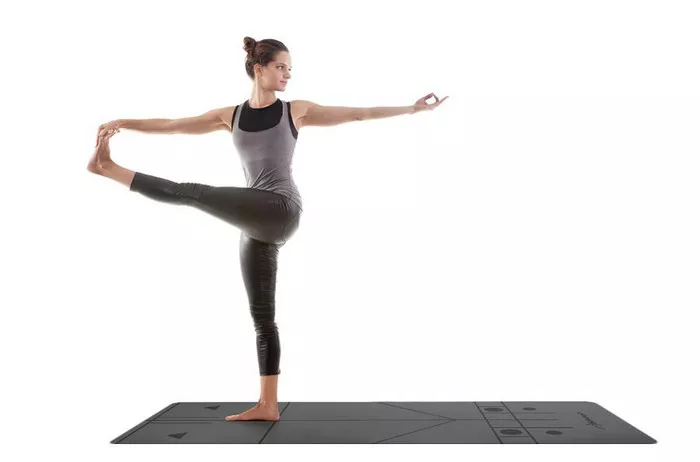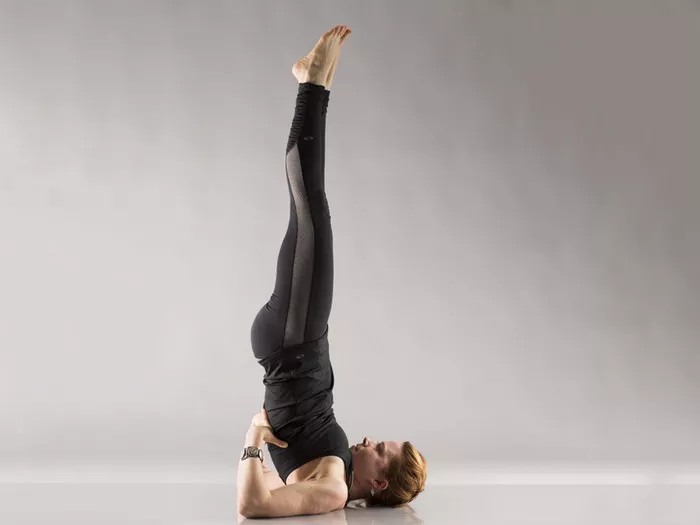Hot yoga, also known as Bikram yoga, is a challenging yet invigorating practice that combines traditional yoga poses with a heated room. With temperatures typically ranging from 90 to 105 degrees Fahrenheit (32 to 40 degrees Celsius), hot yoga sessions induce profuse sweating, aiding in detoxification and enhancing flexibility. Whether you’re a seasoned practitioner or a newbie preparing for your first hot yoga class, having the right gear can make all the difference in your experience. In this comprehensive guide, we’ll explore the essential items you should bring to hot yoga to ensure a comfortable and fulfilling practice.
1. Hydration Essentials
Hot yoga classes can be intense and dehydrating due to the high temperatures and profuse sweating. Staying properly hydrated before, during, and after your practice is crucial for maintaining energy levels and preventing dehydration. Here are some hydration essentials to bring to your hot yoga session:
Water Bottle: Choose a reusable water bottle that’s easy to carry and large enough to hold an ample amount of water. Opt for insulated bottles to keep your water cool throughout the class.
Electrolyte Replenishment: Consider bringing electrolyte-rich drinks or supplements to replenish lost minerals during intense sweating. Coconut water, electrolyte tablets, or sports drinks can help restore your body’s electrolyte balance.
Pre-hydration: Start hydrating well before your hot yoga class. Aim to drink at least 16 ounces of water 2 hours before your session to ensure proper hydration levels.
2. Moisture-Wicking Clothing
Wearing the right clothing can significantly enhance your comfort and performance during hot yoga. Moisture-wicking fabrics are essential for keeping you dry and comfortable by drawing sweat away from your skin. Here’s what to look for in hot yoga attire:
Lightweight Fabrics: Choose clothing made from lightweight, breathable fabrics such as nylon, polyester, or spandex. These materials allow for maximum airflow and ventilation, keeping you cool during your practice.
Fitted Silhouettes: Opt for form-fitting tops and bottoms that won’t restrict your movement or become cumbersome when you’re flowing through yoga poses. Avoid loose-fitting clothing that may trap heat or hinder your mobility.
Sweat-Wicking Properties: Look for clothing labeled as sweat-wicking or moisture-wicking, as these garments are specifically designed to pull moisture away from your skin, keeping you dry and comfortable throughout your practice.
3. Non-Slip Yoga Mat
A high-quality yoga mat is essential for providing stability, cushioning, and traction during your hot yoga practice. Since the heated room can cause sweat to accumulate on your mat, it’s important to choose a non-slip option that offers reliable grip. Here’s what to consider when selecting a hot yoga mat:
Grip Texture: Look for a yoga mat with a textured surface or sticky grip to prevent slippage, even when your hands and feet are sweaty. Mats made from natural rubber or polyurethane often provide excellent traction in heated environments.
Thickness and Cushioning: Opt for a mat with adequate thickness and cushioning to support your joints and provide a comfortable surface for yoga poses. A mat that’s too thin may cause discomfort during kneeling or prone poses, while one that’s too thick may compromise stability.
Easy to Clean: Choose a yoga mat that’s easy to clean and maintain, as you’ll need to regularly wipe away sweat and bacteria after each use. Look for mats that are machine washable or can be easily wiped down with a damp cloth and mild detergent.
4. Absorbent Towel
In addition to your yoga mat, bringing an absorbent towel is essential for managing sweat and enhancing traction during hot yoga. A yoga towel can be used to cover your mat, wipe away sweat, or provide extra grip for your hands and feet. Here’s why a yoga towel is a must-have accessory for hot yoga:
Sweat Absorption: A yoga towel helps absorb excess sweat, preventing it from pooling on your mat and creating slippery conditions. Placing a towel over your mat can also provide a hygienic barrier between your skin and the mat’s surface.
Enhanced Grip: Many yoga towels feature a non-slip surface or silicone nubs that provide additional grip for your hands and feet, even in sweaty conditions. This can help you maintain stability and alignment throughout your practice.
Portability and Convenience: Yoga towels are lightweight and easy to carry, making them convenient for travel or taking to and from the yoga studio. Look for compact towels that fold or roll up neatly to fit in your yoga bag.
5. Proper Hygiene Essentials
Maintaining good hygiene practices is essential for both your health and the well-being of your fellow yogis in a hot yoga environment. Here are some hygiene essentials to bring to your hot yoga class:
Yoga Mat Cleaner: Pack a bottle of yoga mat cleaner or disinfectant spray to sanitize your mat before and after each use. Regular cleaning helps prevent the buildup of bacteria, sweat, and odors, ensuring a clean and hygienic practice space.
Personal Towel: Bring a small towel or washcloth to wipe away sweat from your face, neck, and body during your practice. Avoid using your hands to wipe sweat, as this can transfer bacteria and oils to your face and exacerbate breakouts.
Hand Sanitizer: Keep a travel-sized bottle of hand sanitizer in your yoga bag to disinfect your hands before and after touching communal surfaces or props. This helps reduce the risk of spreading germs and maintains a clean practice environment.
6. Yoga Props and Accessories
While hot yoga classes typically don’t require a lot of props, having a few key accessories on hand can enhance your practice and provide additional support as needed. Here are some useful yoga props to consider bringing to your hot yoga session:
Yoga Blocks: Yoga blocks can be used to modify poses, provide support, or deepen stretches during your practice. Choose lightweight foam blocks that are easy to transport and manipulate in the heated room.
Yoga Strap: A yoga strap can help improve flexibility and alignment by extending your reach in challenging poses. Look for a durable, non-slip strap with adjustable loops for versatile use.
Sweatbands or Headbands: Keep sweat out of your eyes and hair with the help of sweatbands or headbands. Look for absorbent, quick-drying materials that won’t slip or shift during vigorous movement.
7. Post-Yoga Essentials
After completing your hot yoga practice, it’s important to take care of your body and replenish your energy levels. Here are some post-yoga essentials to consider bringing with you:
Change of Clothes: Pack a fresh set of clothes to change into after your practice, especially if you’re heading straight to work or running errands. Choose lightweight, breathable fabrics that will keep you comfortable and dry.
Recovery Snacks: Refuel your body with nutritious snacks or beverages to replenish lost energy and support muscle recovery. Opt for snacks high in protein and carbohydrates, such as a smoothie, energy bar, or fruit with nut butter.
Cooling Towel or Misting Spray: Bring a cooling towel or misting spray to help lower your body temperature and soothe overheated skin after your practice. Simply dampen the towel or spray it with water and place it on your neck, forehead, or wrists for instant relief.
Conclusion
In conclusion, preparing for a hot yoga class involves more than just rolling out your mat and showing up. By bringing the right gear and essentials, you can enhance your comfort, performance, and overall enjoyment of the practice. From hydration essentials and moisture-wicking clothing to non-slip yoga mats and post-yoga recovery snacks, each item plays a vital role in supporting your hot yoga journey. By investing in quality gear and practicing good hygiene habits, you’ll be well-equipped to tackle the challenges and reap the benefits of this transformative yoga practice.
FAQs:
Can I eat eggs before hot yoga?
It’s generally best to avoid heavy meals, including eggs, before hot yoga. Eating a light snack or meal 1-2 hours before class can provide energy without causing discomfort. Opt for easily digestible foods like fruit, yogurt, or a small serving of nuts to fuel your practice effectively.
Should I wear deodorant to hot yoga?
Yes, wearing deodorant to hot yoga is a good idea to help manage body odor, especially in the heated environment where you’ll be sweating profusely. Choose a natural or aluminum-free deodorant to minimize irritation and allow your body to detoxify naturally. However, avoid applying heavily scented products that may be overpowering in the close quarters of a yoga studio.
Is hot yoga stressful?
Hot yoga can be physically challenging due to the high temperatures and intense workout, but whether it’s stressful depends on individual preferences and experiences. Some practitioners find the heat and intensity invigorating, while others may feel overwhelmed. It’s essential to listen to your body, take breaks as needed, and focus on your breath to manage stress and stay present during your practice.
















